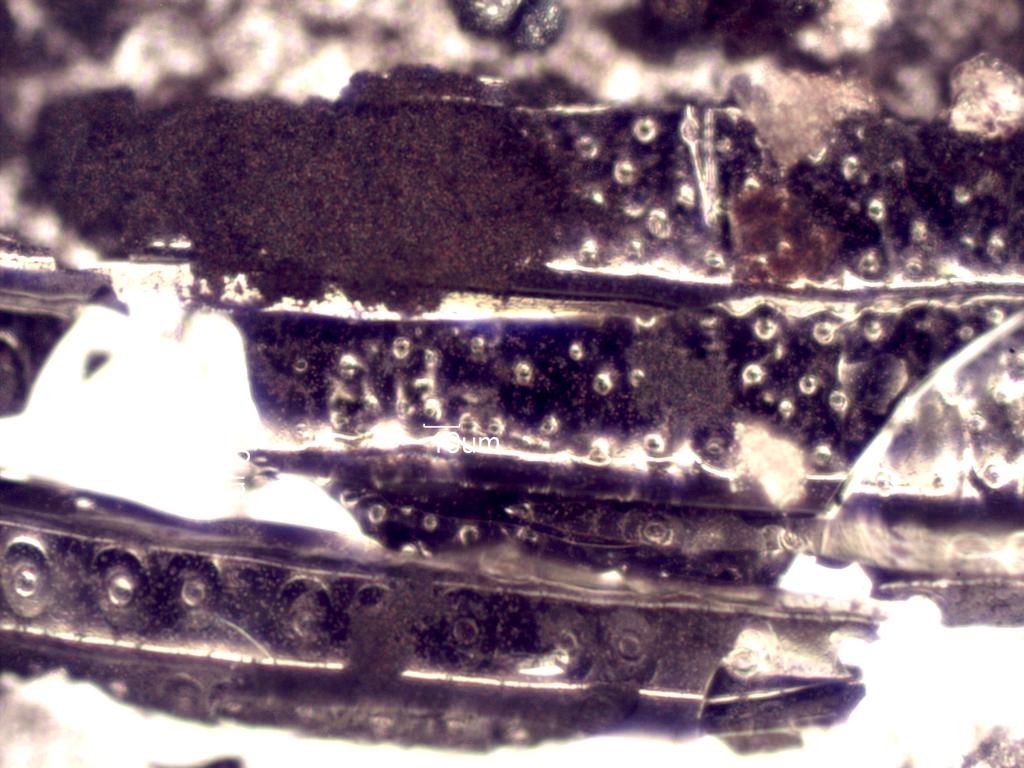Charred Wood from a House Fire
This is a piece of charred Douglas fir from the structural
wood used in this apartment. This is from an
environmental tapelift collected in the apartment that burned. The association of
high hydrocarbon content soot is common when the source of the
charred wood is an apartment or home fire. Cross-field pitting is shown here. The
helical thickening is less obvious but can be seen on the cell
border at the bottom of the image.
Transmitted Off Crossed Polarized Light and Reflected Darkfield Illumination
Definition/Function:
Charring or coking of wood tends to retain the structure of the wood. As a result the
genus or even the species of the wood can often be determined
from an examination of the structure still evident. There is a reduction in the size of
the structures of about 20% typically.
Significance in the Environment:
Many types of wood are used in a wood structure building. The studs and structural beams
in a wood building are often Douglas fir or Pine. This
wood is often the dominant type of charred wood in the burnt building. The finish woods
are generally hardwoods though Cedar and Pine are also used
as a common paneling in some regions.
Characteristic Features:
Douglas fir (Pseudotsuga) is the only common softwood showing regularly spaced helical
thickening on the tracheid cell walls. The other softwoods
showing helical thickening are yew (Taxus) and nutmeg yew (Torreya) but the spacing of
the thickenings in these trees is irregular. The pores of
Douglas fir tracheids are bordered, large, monoseriate and opposite biseriate. The
border on each side of the pore is about the same width as the
pore. The cross-field pitting is smaller with a very thin border and tends to be in
pairs.
Associated Particles:
References:


